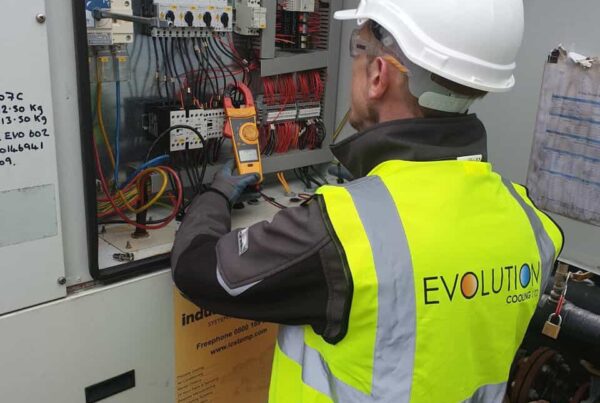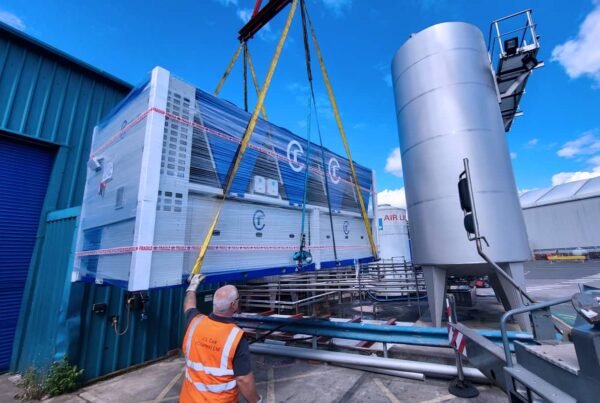Deciding what to do with an ageing or underperforming chiller cabinet is not always straightforward. While repairs might offer a quick fix, they are not always the most cost-effective option in the long run. At some point, the better move may be to replace the system entirely or consider an upgrade to its older parts and components.
This guide looks at the pros and cons of each approach to help you make an informed decision. Whether your unit has failed unexpectedly or you are planning for future investment, the right choice will depend on your site, usage and long-term goals. Please note that, here at Evolution Cooling, we can provide you with specialist advice on new chiller units and the expected lifespan of your current ones, so that you receive the best guidance in your specific case.
Repairing Your Chiller Unit: When Is It Worth It?
Chiller repair is often the first option that comes to mind, particularly when the fault seems minor. If your system is relatively new and the issue is limited to a faulty sensor, control board or valve, a one-off repair can be a practical and affordable solution.
Maintenance routines, such as filter changes, refrigerant top-ups or coil cleaning, can restore performance without the need for major intervention. In well-maintained systems under 10 years old, reactive repairs still make financial sense and you can call on us for 24/7 breakdown repairs whenever you need one.
However, if breakdowns are becoming more frequent or repair costs are stacking up, it may point to deeper issues. This is especially true for systems over 12 to 15 years old, where part failure often signals declining efficiency throughout the unit. At this stage, repair is usually a short-term patch rather than a long-term fix.
Replacing a Chiller: Long-Term Value and Performance

Although replacing a chiller involves a higher initial outlay, the long-term benefits are often well worth it. Modern systems are built for efficiency, reliability and compliance. They use advanced controls, updated refrigerants and quieter, more compact components that outperform older units.
Energy savings alone can justify the investment. A new chiller can consume up to 30% less power than a system installed 15 years ago, especially when paired with improved insulation and flow management. This translates to real cost savings month after month.
Replacement is also the best option when operational demands have changed. If your cooling needs have increased or become more precise, a bespoke new system can be designed to match. What’s more, high-performance chillers tailored to your application and site constraints can help to improve business operations as well as reduce your energy overheads.
Is Upgrading an Option? Controls, Components and Limitations

For some businesses, a full replacement may not be feasible right away. In these cases, upgrading certain components can extend the life of your existing unit and improve performance. This could include retrofitting digital controllers, replacing fans or pumps or switching to inverter-driven compressors.
Upgrades are most effective when the core structure of the chiller is still in good condition. For example, if the evaporator and condenser coils are intact and the frame is sound, modernising the control system could improve efficiency without a full replacement.
However, compatibility issues and diminishing returns are common concerns. Some older systems are not designed to work with newer parts, which can limit the impact of an upgrade. While upgrades can buy time, they are often best viewed as an interim measure rather than a permanent solution.
Chiller Hire: A Temporary Solution for Urgent Situations

When a chiller fails unexpectedly or when lead times for a replacement are unavoidable, hiring temporary units can provide a fast and reliable stopgap. Interim chillers can be delivered and installed quickly, allowing your site to maintain operations with minimal disruption.
Chiller hire is also useful during scheduled maintenance shutdowns or seasonal periods where additional capacity is needed. For example, leisure centres or food storage facilities may require extra cooling in summer, even if their main unit is still operational.
This option can be an effective way to bridge the gap while repairs are made or a new system is on order. It provides the flexibility to maintain cooling performance without rushing into a long-term decision.
Making the Call: Cost, Downtime and Site Needs
There is no one-size-fits-all answer. The right decision depends on your unit’s age, the cost of continued maintenance and the risk of downtime. A relatively new chiller with a known issue may be worth repairing, while an older system with recurring faults is likely better replaced.
Energy performance, service frequency and access to spare parts should all factor into your decision. So too should the operational impact of failure. For mission-critical environments,






